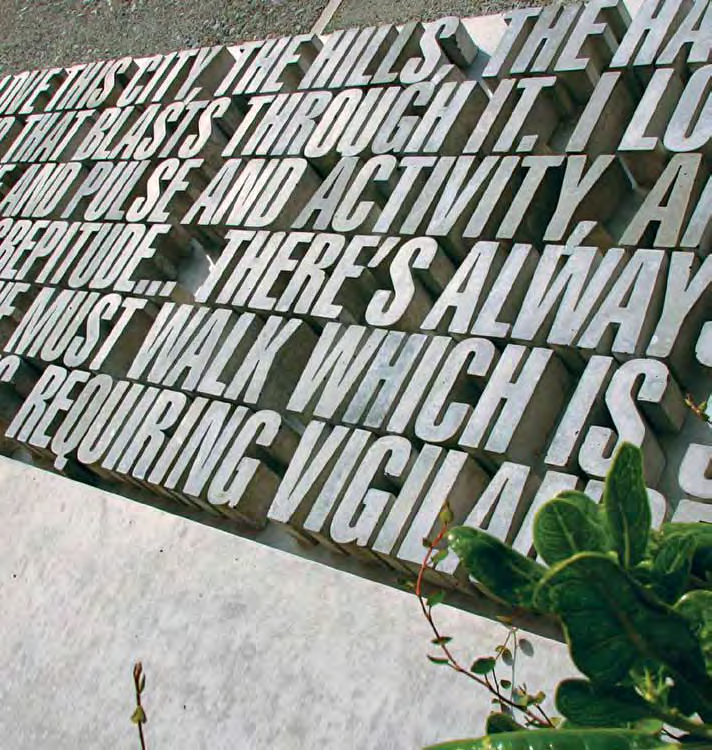

PUBLIC
ART
POLICY
2012
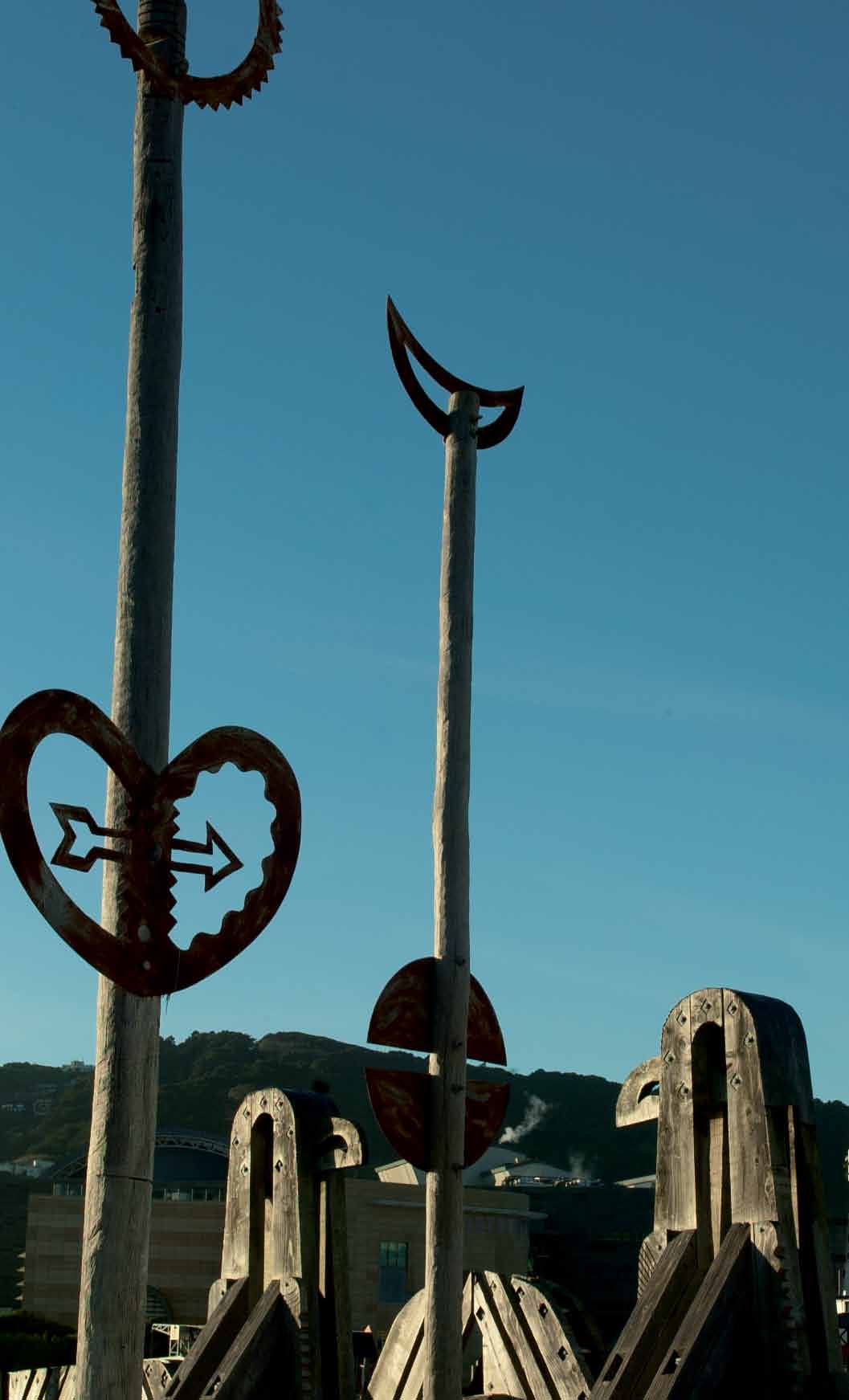 INTRODUCTION
INTRODUCTION
Wellington City Council is committed to supporting arts activities to create and
sustain opportunities to ensure the city and suburbs are vibrant, engaging
and dynamic.
Public art is the most visible and accessible form of art and is integral to what
makes Wellington a stimulating and inviting place to be. It is a key indicator of
a city’s creativity, openness and quality of life.
Public art performs an important social function by reflecting a city’s heritage
and also its cultural diversity. Public art can shape regional identity –
creating a sense of belonging and improving the look and feel of our
public places.
Public art has an important role in social and economic change.
It stimulates new thinking and activity that directly inspires innovative
new businesses and social activity.
Public art can also be critical, provocative and can generate
discussion about our cities and how we live in them.
Wellington City Council will continue to support and encourage public art
activity that is of a high artistic standard and that promotes Wellington as a
dynamic and culturally diverse city.
The Public Art Policy outlines eight desired outcomes for public art
activity. These express Wellington’s commitment to the role of public art
in the overall strategic planning of the city. They also contribute to the
implementation of Towards 2040: Smart Capital and the Arts and
Culture Strategy.
The policy identifies a set of outcomes for public artworks to achieve, and
how this will be done. It also covers:
: criteria for approving new public art activities
: criteria for accepting donated/gifted works
: criteria for relocating existing works
: criteria for deaccessioning existing works
: maintenance and asset management
: monitoring and evaluation
1
COVER: WELLINGTON WRITERS WALK (DETAIL) PHOTO: NICK SERVIAN
CITY TO SEA BRIDGE (DETAIL) – PARA MATCHITT
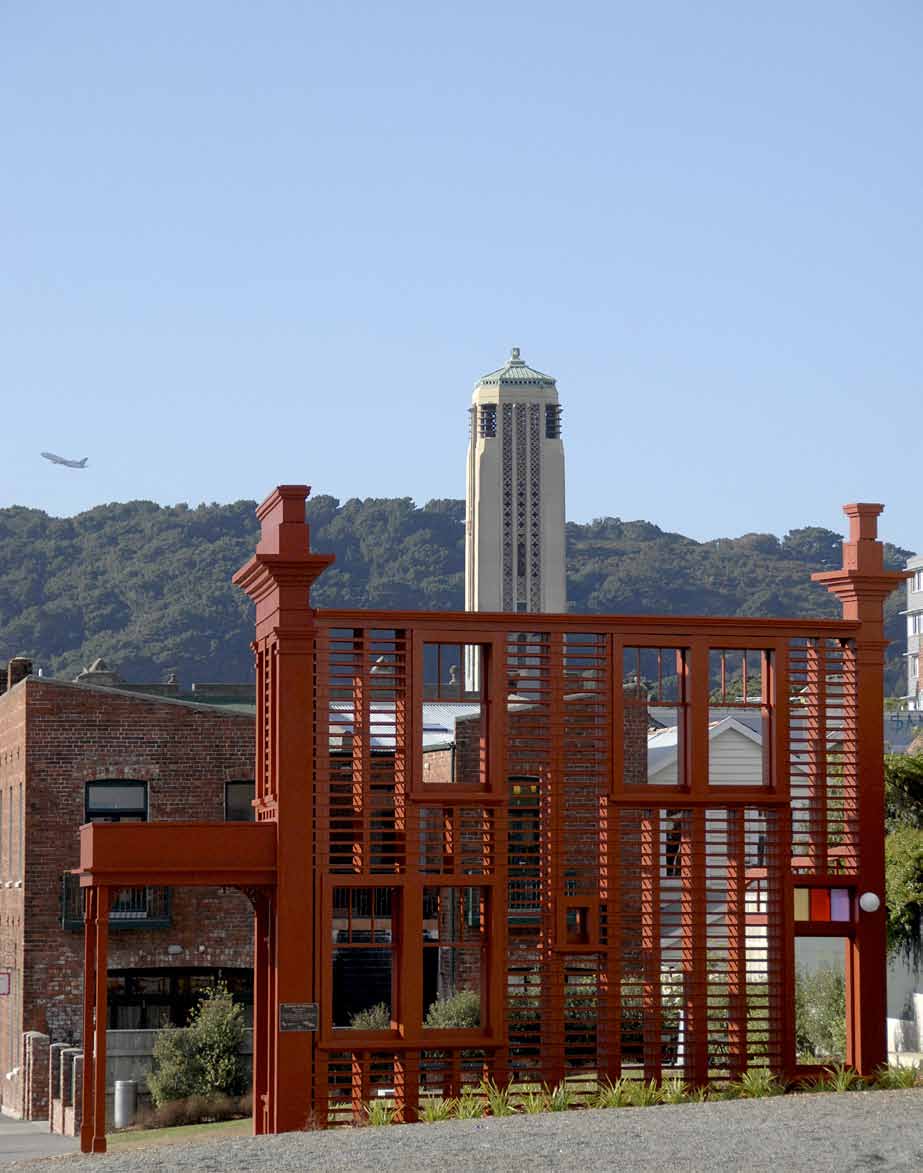 WE WILL CONTINUE
What is public art?
TO SUPPORT AND
ENCOURAGE PUBLIC
WE WILL CONTINUE
What is public art?
TO SUPPORT AND
ENCOURAGE PUBLIC
The policy refers to public art as an activity so that it captures all art forms
that take place in a public space. Public art activity is defined here to
ART ACTIVITY OF
include permanent, temporary and performance art, and the conceptual
contribution of an artist to the design of public spaces.
A HIGH ARTISTIC
Public art activity encompasses:
STANDARD, WHICH
: artists contributing to the thinking and design of public places
ALSO PROMOTES
and spaces
WELLINGTON
: art concepts and/or artworks and/or design features integrated into
urban design developments (including buildings, streets and parks)
AS A DYNAMIC
: artists working in and with communities in public spaces
AND CULTURALLY
: art processes and artworks in the public sphere that may be variously
described as sculpture, murals, street-art, performance, new-genre
DIVERSE CITY
public art, relational aesthetics, and/or installations
The Public Art Policy does not cover:
: Wellington City Council City Art Collection – a collection of artworks
situated within Council buildings covered by the Furnishing Art
Collection Policy
: privately owned works
: events covered by the Events Strategy
: advertising/billboards located in public space
: anything on private land
: impromptu public art activity
Wellington City Council represents the citizens of Wellington in the
facilitation, approval, management and maintenance of public art activities.
The policy applies to the assessment of public art proposals including gifts/
donations, and addresses the relocation, deaccessioning, maintenance and
monitoring of public artworks.
Proposals for public art activities can originate from a variety of
sources including:
: individual artists
: arts organisations (for e.g. Wellington Sculpture Trust)
: private individuals or entities (for e.g. gifts, donations, commissions)
: Councillors
: various teams within the Council (including Council’s City Arts team)
Projects from these sources must go through the same assessment
process to ensure they achieve the desired public art outcomes.
3
SUBJECT TO CHANGE – REGAN GENTRY
4
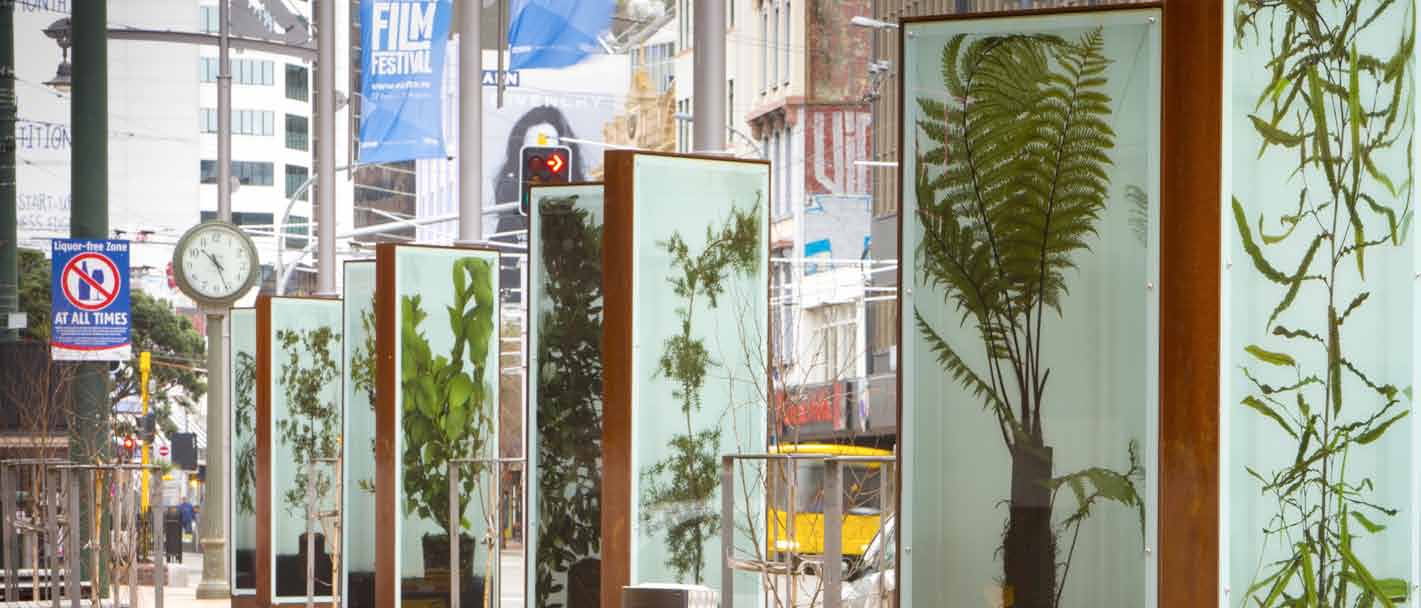 OUTCOMES
5 WELLINGTONIANS ARE MORE ENGAGED IN THE DEVELOPMENT
OF PUBLIC ART ACTIVITY
OUTCOMES
5 WELLINGTONIANS ARE MORE ENGAGED IN THE DEVELOPMENT
OF PUBLIC ART ACTIVITY
The following outcomes form the basis for the approval and prioritisation of public
While drafting the Arts and Culture Strategy, the Council received feedback
art activities in Wellington City. These outcomes are derived from the strategic
from the public that they would like more involvement in the city’s arts and
priorities of:
culture projects.
: Towards 2040: Smart Capital, 2011
Wellington City Council will support projects that increase the level
: Arts and Culture Strategy, December 2011
of public engagement in the development of public art activity. For
example, a professional artist may work with a community to facilitate
: Central City Framework, December 2011
the development of an artwork, or residents may be informed about an
: Long Term Plan, 2012/2022
upcoming permanent public artwork.
: The District Plan, 2010
WELLINGTON’S PUBLIC ART ACTIVITIES WILL BE FRESH
6 T
HE CITY’S PUBLIC INFRASTRUCTURE INTEGRATES
ART CONCEPTS AND/OR DESIGN FEATURES AND/OR
1 AND INNOVATIVE
PHYSICAL ARTWORKS
Wellington’s public art activities give the city a dynamic edge, making it
To ensure an integrated approach, it is important that public art is
visually stimulating and interesting, and contribute to the perception of the city
considered at the start of an infrastructure or open space design (re)
as a place of creativity and innovation.
development project.
Wellington City Council will support public art activity that is fresh, new,
Wellington City Council will incorporate public art activities, where
experimental and innovative.
appropriate, as a means for telling the city’s stories in public space
design and adding a strong visual aesthetic. This may involve an artist
conceptually contributing to the design, influencing the design palette
PUBLIC ART ACTIVITIES IN WELLINGTON’S SUBURBAN CENTRES
or producing a temporary or permanent physical artwork or series of
2 ENHANCE SENSE OF PLACE
artworks for the site.
Over the past 25 years public art activity has largely been concentrated in the
central city. The Council would like to see this creative attention shared with
the city’s suburbs, to enhance their unique identities. Public art activity can
contribute to a ‘love of the local’ and a sense of place for suburban centres,
7 INITIATE AND IMPLEMENT PROGRAMMES TO COMMUNICATE
AND EDUCATE PEOPLE ABOUT WELLINGTON’S PUBLIC
contributing to more confident suburban identities.
ART ACTIVITY
Wellington City Council will support public art activities that take place in
To increase access to and understanding of the city’s collection of public
the suburbs and enhance local identity, reinvigorating public spaces and
artworks it is important that programmes are designed to communicate
generating a sense of belonging.
and educate residents and visitors to the city about this activity.
Wellington City Council will support projects that look at new ways to
communicate and educate people about Wellington’s public art activity.
3 MĀORI WHAKAPAPA1 AND HISTORY ARE EXPRESSED
IN WELLINGTON’S PUBLIC ART ACTIVITY
1 The Māori term
Wellington City Council recognises mana whenua and the past, present and
‘whakapapa’ is used to
future relationship of Māori with the city, Te Whanganui-a-Tara.
describe genealogies,
8 PUBLIC ART ACTIVITIES DIRECTLY CONTRIBUTE TO SOCIAL
AND ECONOMIC CHANGE AND URBAN/SUBURBAN
and the many spiritual,
REVITALISATION IN WELLINGTON
Wellington City Council will encourage artworks that include input from mana
mythological and human
whenua and that aim to foster awareness, understanding and knowledge of
There is now a broader understanding of the role of public art from making
stories that flesh out the
local Māori whakapapa and history.
genealogical backbone.
a city look good to the ways it can contribute to social and economic
change and urban/suburban revitalisation. For example public art activities
can take place in disused public spaces bringing a new community into
that space.
4 THE CITY’S DIVERSE COMMUNITIES ARE REPRESENTED
THROUGH PUBLIC ART ACTIVITIES
Wellington City Council will support public art activity that directly
Public art activities can play an important role in representing and
contributes to social and economic change and urban/suburban
celebrating Wellington’s varied communities – it can recognise, comment
revitalisation in the city.
on and support their culture.
Wellington City Council will support public art activities that create
opportunities and visibility for the city’s diverse communities.
5
EVER GREEN, COURTENAY PLACE PARK LIGHT BOX PROJECT (DETAIL) – JENNY GILLAM AND DIENEKE JANSEN
6
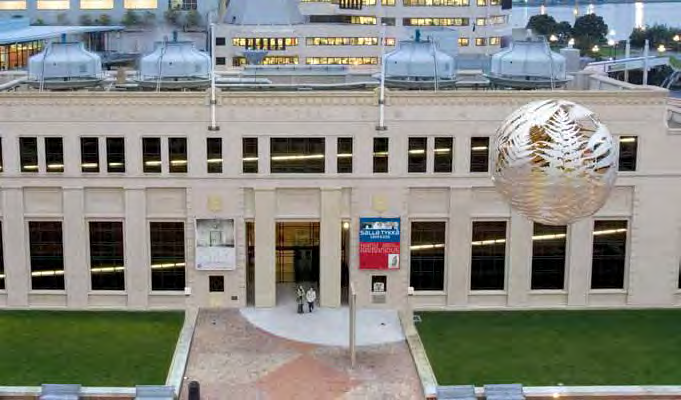 PARTNERSHIPS
PARTNERSHIPS
Wellington City Council will work closely with organisations, tertiary
institutions and members of the community interested in and involved in
the development of Wellington’s public art.
The Council’s particular focus includes working in partnership with the
Wellington Sculpture Trust, Mana Whenua organisations and Wellington
Waterfront Ltd.
Council will work with its key partners to draft Memorandums of
Understanding that will outline working processes to ensure an integrated
approach to the development of public art activity.
BILL CULBERT AND RALPH HOTERE – FAULT
NEIL DAWSON – FERNS
The Council’s City Arts team should be the first point of contact for public
art activities. This is to make it easier for the Council, its partners and
others to work together to deliver high-quality public artwork.
The Public Art Panel (PAP) is made up of experts in various arts fields.
Five Council officers sit on the PAP – the Chair, Manager City Arts team
and PAP Administrator, Arts Advisor also from the City Arts team, the
The Council’s City Arts team should receive applications for public art activity
officer responsible for maintenance of public artworks, the Manager of
proposals on public space and proposals seeking support from Council,
Treaty Relations and a representative from the Urban Design team. At
whether from:
least three members of the PAP are independent – one from City Gallery
: the Public Art Fund (administered and managed by the City Arts team)
Wellington, the other recommended by Mana Whenua and the third an
: a Council grant (eg Creative Communities or general grants2)
expert appointed to balance the makeup of the PAP.
: the Council’s operational or capital expenditure budgets
: support in principle or advocacy for public art activity
2
The PAP provides expert advice to guide the development of public art
All Council grants’ criteria
The City Arts team will assess proposals it receives in collaboration with
will be adhered to in
activity in Wellington City. The Chair of the PAP makes the final decision on
Council’s Public Art Panel to ensure they meet the criteria and reflect the
addition to the outcomes
support provided to projects.
and criteria within this
outcomes for public art activity.
PAP members will:
Public Art Policy.
: maintain a curatorial overview of public art activity in Wellington
: contribute to the development of a public artwork programme that
meets the Council’s desired outcomes for public art activity
: provide advice to Council on proposals for public art activity
HIGH-LEVEL APPROVAL PROCESS
: advise on commissioning processes and artist selection methods
: make recommendations to Council on the acquisition, bequest,
donation or loan of art for public spaces
: make recommendations on works that should be relocated or
deaccessioned
PROPOSAL
ASSESSMENT AND
APPROVAL
:
RECOMMENDATION
liaise with key public art stakeholders – Mana Whenua, Wellington
Artist/Arts
City Arts Team
Sculpture Trust and Wellington Waterfront Ltd
Organisation
Public Art Panel
: suggest ways to develop sector skills and nurture the creation of public
art projects
In addition to assessment, the City Arts team can provide advice to arts
practitioners, arts organisations and those interested in commissioning or
For more detail see the operational flow chart in Appendix 1.
partnering in public art activity before a formal proposal is lodged.
7
8
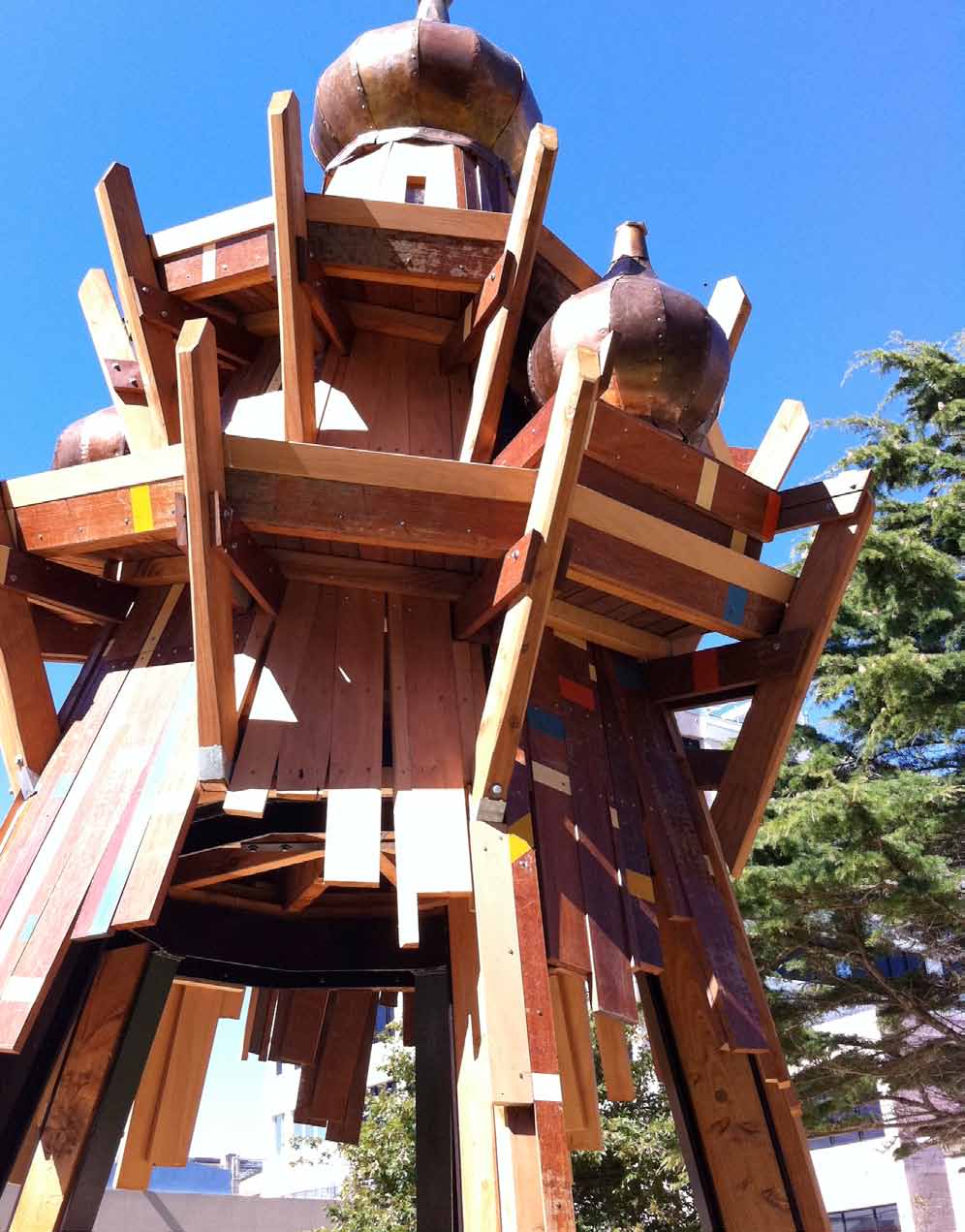 CRITERIA
CRITERIA
People seeking support from the Council
support of mana whenua
for public art activity will have to show
representative organisations (eg Port
that the proposed activity (including gift/
Nicholson Block Settlement Trust, Te
donation) is of a high standard of artistic
Rūnanga O Toa Rangātira); and helps
merit and has a strong link to one of the
to develop the artistic capacity of
outcomes in this policy (section 1.6).
mana whenua (Ngāti Toa and Taranaki
Proposals will be assessed against
Whānui) in a meaningful way
the following criteria derived from the
: celebrates/represents Wellington’s
policy outcomes. Priority will be given to
diverse communities, creating
proposals that demonstrate at least one
opportunities for diverse
of the following:
community groups
: new artistic practices that will
: demonstrates how Wellington
reinforce Wellington’s reputation as a
residents will be engaged in the
centre for innovation
development of public art activity
: located in one of Wellington’s
: takes place in public infrastructure as
suburban centres and reflect
part of a (re)development project
that suburban centre’s sense of
: initiates and implements programmes
place through its history, culture
to communicate and educate people
and topography
about Wellington’s public art activity
: recounts Māori whakapapa
: directly contributes to social and
and history; and/or can
economic change and urban/
demonstrate approval and
suburban revitalisation in Wellington.
The fit with a specific public art outcome : demonstrate a high standard of
will be weighted against the artistic
artistic excellence
merits of the proposal. This will ensure
:
that work of outstanding artistic merit is
respond to the proposed site, which
means taking into consideration the
not dismissed due to a poor fit with
sites context (cultural, historical,
the outcomes.
environmental).
In assessing the artistic merit of a
: may present opportunities for
proposed activity, the following factors
Wellington artists
will be taken into account including a
work’s response to a particular site.
: consider the accessibility of
Priority will be assigned to public art
an artwork
activity proposals that:
9
EVERYTHING IS FOR THE BEST, IN THIS BEST OF ALL POSSIBLE WORLDS (DETAIL) – SHANE MCGRATH
10
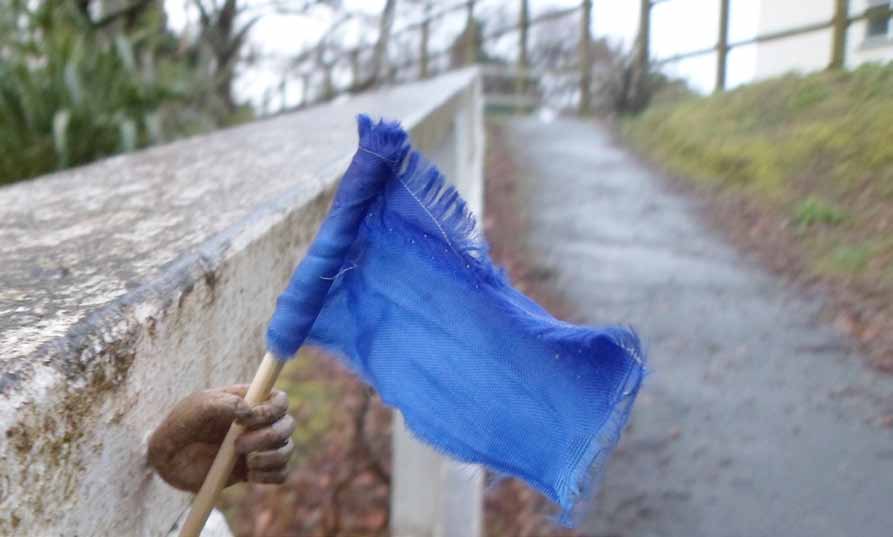 DEACCESSIONING PUBLIC ART
DEACCESSIONING PUBLIC ART
Public art proposals must take place within the Wellington City Council area and
The Council will consider deaccessioning public artworks for a range of reasons
meet safety requirements. All proposals seeking approval must:
including:
: take place within the Wellington City Council area
: artistic and historic relevance
: demonstrate appropriate consideration of public safety and the public’s access to
: public safety
and use of the public domain
: changes to the design and use of the public space occupied by the artwork
: indicate credible maintenance and durability requirments
: artwork is vandalised or damaged and repair is not feasible.
The Council will follow the same process as if the artwork was offered for the
first time. The decision will also be made on consideration of consultation with
the artist(s) (or the family of the artist(s) if necessary) and other relevant people
The Council will consider relocating public artworks for a range of reasons including:
or organisations involved in its establishment. If an artwork needs to be moved or
: artistic and historic relevance
altered in any way, consideration will be given to the moral rights of an artist under
:
the Copyright Act 1994.
public safety
:
Options will include:
changes to the design and use of the public space occupied by the artwork
:
:
selling or gifting the artwork back to the artist
a new and better site has become available for an artwork
:
:
donating to a community group or facility, or organisation that operates for
a change in the outcomes for public art activity.The Council will follow the same
public benefit
process as if the artwork was offered for the first time. If the result of this is not to
move the artwork the Council may also consider deaccessioning the work.
: open sale or auction.
Decisions will be made on consideration of consultation with the artist(s) (or the
Decisions on the above options will be made by the City Arts team with guidance
family of the artist(s) if necessary) and other relevant people or organisations
from the Public Art Panel, based on criteria that include:
involved in its establishment. If an artwork needs to be moved or altered in any
: resale value
way, consideration will be given to the moral rights of an artist under the Copyright
: sensibilities around how Council came to own the artwork
Act 1994.
: condition of the artwork.
The Policy does not envisage placing public artworks in storage in the possibility
that they will be useful in the future, although temporary storage (e.g. waiting
for a specific site to become available) will be permitted if the artwork meets the
outcomes and criteria of this policy.
MAINTENANCE AND ASSET MANAGEMENT
Wellington City Council is responsible for maintaining its public artworks to a safe
standard and to ensure artistic integrity is retained.
An asset management plan and database for public art will be regularly updated to
represent a complete register of public artworks that the Council has responsibility
for. This will include a maintenance or conservation plan that details the condition
and management requirements for each work – possibly as identified by the artist.
MONITORING AND EVALUATION
Wellington City Council will monitor the performance of the Public Art Policy, and will
evaluate the impact of public art activity against the outcomes.
Projects funded by the Public Art Fund will incorporate a written evaluation after
project completion that provides project analysis (qualitative and/or quantitative) to
enable the benefits for public art activity to be measured.
CITY TO SEA BRIDGE – PARA MATCHITT
11
ORNAMENTAL THOUGHTFULNESS – MARY WHALLEY
12
APPENDIX ONE:
APPENDIX TWO:
ASSESSMENT PROCESS FOR PUBLIC ART ACTIVITIES
GUIDELINES FOR ASSESSMENT PROCESS
ON PUBLIC SPACES
The following table outlines how proposals for public art activity will be assessed,
to ensure that they meet the public art outcomes. A proposal seeking Council
support must achieve a high score in at least one section (either section A or B) and
a medium in the other. The descriptions under the rating options of low, medium and
high indicate the kind of standard required for the appropriate score.
TOWARDS 2040
Smart Wellington
EXTERNAL
PROPOSALS
INTERNAL
PROPOSAL ASSESSMENT CRITERIA
For example:
PROPOSALS
Rating:
Low
Medium
High
: Arts Organisations
For example:
Section A:
Artistic merit
ARTS AND CULTURE
: Private
: Other Council teams
Artistic merit
Average merit – proposed Significant merit –
Outstanding merit –
STRATEGY
: Donation/Gift
: Councillors
activity is underwhelming
proposed activity is of a
proposed activity is of a
good standard
high standard
Section B:
Strategic fit
Fresh, innovative
Not very innovative
Reinforces current
Innovative – adds
innovation trends
something fresh and new,
extends thinking and
OUTCOMES
discourse about public art
PUBLIC ART
FOR PUBLIC ART
Suburban art enhancing
Takes place in the suburbs Takes place in the suburbs Takes place in the suburbs,
PROPOSAL
ACTIVITY
sense of place
and enhances local identity enhances local identity,
reinvigorating public space
PUBLIC
and generating a sense of
ART
belonging to that place
PANEL
Māori whakapapa
Uses Māori concepts,
Work uses local or national Work uses local Māori
and kōrero
words and themes
Māori concepts, words and concepts, words and
PROJECT
themes and involves
themes and involves
CRITERIA
ASSESSMENT
Māori artist(s)
Māori artist(s) who is/
are recognised by mana
whenua authorities
Represents diverse
Represents a diverse
Represents and provides
Provides opportunities
communities
community group
opportunities for a diverse and represents, celebrates
community group
and strengthens a
APPROVAL
NO APPROVAL
community group
(meets criteria) (does not meet
Engages the community
Little or no engagement or Engages residents in
Engages residents in the
criteria)
information about activity
some aspects of the
development of work;
development of public
informs local community
art activity
about activity
Incorporates art into public Artist commissioned
Artist conceptually feeds
Artist conceptually feeds
infrastructure
to develop a work
into design of public infra-
into design of public
for completed public
structure at the beginning infrastructure and develops
infrastructure project
of the project
artwork(s) for incorporation
Programmes to
Programme will increase
Programme will increase
Programme will
communicate and educate communication around the communication and
communicate and educate
people about public
city’s public art activity/ies
educate people about the
– increasing access to,
art activity
city’s public art activities
knowledge of, and promote
activity to an international
audience
Contributes to social and
Activity contributes to
Activity contributes to
Activity contributes to
economic change, and
social and economic
social and economic
social and economic
revitalisation in Wellington
change
change, and urban/
change, and urban/
suburban revitalisation
suburban revitalisation
that directly inspires
innovative new businesses
and social activity
13
14
Document Outline







